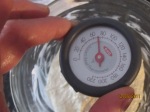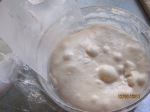I have tried to make sourdough bread with raisin yeast water without sourdough using Jump Start to have sour flavor for a month. I was wondering if I could make sourdough bread. I can make non sour sandwich bread or bagels or English muffins with raisin yeast water because I use a lot of raisin yeast water for these levain. What if I use a little amount of raisin yeast water for the levain?
Rustic bread with raisin yeast water

you can click on it↓ if you can’t read well.

* When I used 1.8% salt as to 100% flour including preferment flour to make this bread that was retarded, I tasted little bitter than the original one. I also made this bread without retarding with 1.6% salt as to 100% flour including preferment flour. It tasted right, too. It is up to your taste.
Method:
1. Mix the levain and ferment it for 12 hours at the room temperature.
After 12 hours: the dough rose tripled.

2.Next morning: Mix thoroughly the levain and the final dough ingredients except the salt and leave it for 30 minutes at the room temperature ( Autolyze).


3. Add the salt and knead the dough on the surface until it gets gassy and elastic for 5-6 minutes. The dough temperature – 70F after kneading.

4. Bulk fermentation: About 7 hours until the dough rises close to tripled.
* Note: This is not about the time, it is all about how much your dough rise before you preshape the dough. If your dough is very slow to rise, just wait until it is ready. Long bulk fermentation makes flavorful bread! 
Folding: Stretch and fold the dough on the surface once after 45 minutes of bulk fermentation.

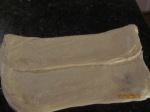




After 7 hours: it rose close to tripled.
5.Preshape and bench time: Preshape lightly into a round ball and rest the dough at the room temperature for 30 minutes. You can upside down the bowl that the dough was fermented to cover the dough for the bench time.



6. Shaping:
Stretch the dough into a square gently..

Make a letter fold..

Another letter fold..

And make a round ball with your both hands..

Place the dough into the banneton and put it in a bigger plastic bag to proof..

7. Final proof (1): Ferment the dough at the room temperature for50-60 minutes until the dough started to lose the shape. And Retard the dough for overnight ( keep the dough in the refrigerator).
8. Final proof (2) and Preheat 465F : Move the dough to the room temperature ( colder place around 67 F) and ferment the dough for 2 hours around. I would bake the dough before the dough gets sticky. It will be difficult to remove the dough from the banneton.
* I use a big stainless steel bowl to make steam. The stainless steel bowl should be preheated before baking, too.
The dough doesn’t rise much but it will be fine.

9. Scoring and baking: Bake at 465F for 12 minutes with the stainless bowl. Take the bowl out and lower the oven temperature at 425F and bake more 8 minutes, then lower the oven temperature at 400F and put *a cooling rack under the bread and bake more 25-30 minutes until golden brown. * I use the cooling rack while baking loaves because I don’t like the bottom of loaves burned.
Score the dough as you like…

Take the hot stainless bowl out of the oven at first, and slide the dough into the oven and put the hot stainless steel bowl back into the oven USING YOUR GLOVES THAT DON’T SLIP when you hold it.
About the taste: 1st day: remaining some sweet,but little sour. The sourness reminds me of Apple cider vinegar.
2nd day: little sour at the end after eating. No more tasting the sweetness that I tasted on the first day.
3rd day: Sourer . I tasted sour while eating, but it is very pleasant as much as my 5 year-old daughter enjoyed it. because it has more complex flavor than the sourness.
Very moist ( Not wet dough)and light and soft crumb. The crust was harder than the one that I baked without retarding, but the crust on the top was very thin and crispy.
This dough acted like Tartine’s country bread and the taste was like the miche that David posted on TFL, but this crumb was softer.



————————————————————————————————————————-
The pictures of the loaves were used instant yeast. I added 0.3% instant yeast as to 100% total flour including preferment flour. I didn’t retard it.
Bulk fermentation : about 2 hours until the dough rise tripled and the final proof : 50 minutes around.


I gave this loaf ↑to my daughter’s school bus driver as a gift. She told me that the bread was the best bread that she ever had. I am so happy that she enjoyed as much as she ate this bread “Breakfast” ” Lunch” and ” Dinner” on the day. That made my day.

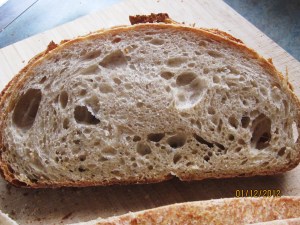
We enjoyed the loaf as much as the loaf that was retarded. These loaves were also very light too. The crust was very crispy and thin and the crumb was very soft and fluffy, but it had nice volume. I tasted sour very slightly, which I was looking for this loaf.

Koubo by Akiko is licensed under a Creative Commons Attribution 3.0 Unported License.



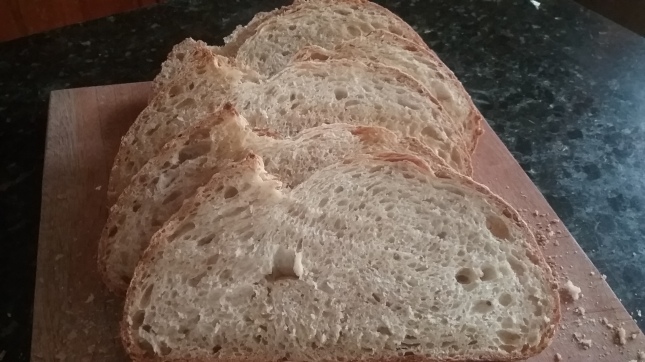







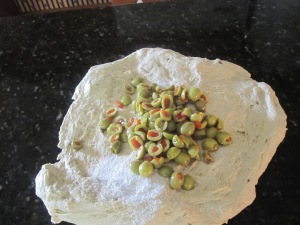







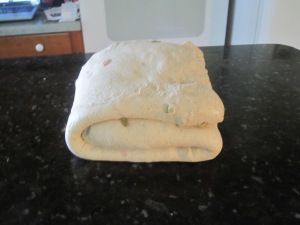




















































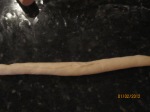




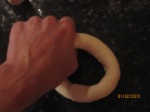







 Standard sandwich loaf
Standard sandwich loaf
 Mountain sandwich loaf
Mountain sandwich loaf 3. Knead until you pass the windowpane test for 20 minutes.
3. Knead until you pass the windowpane test for 20 minutes.















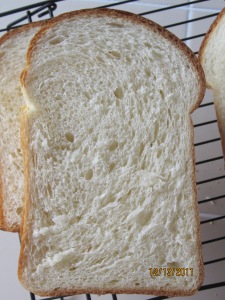




 Sesame bread with raisin yeast water/Cold oven
Sesame bread with raisin yeast water/Cold oven





